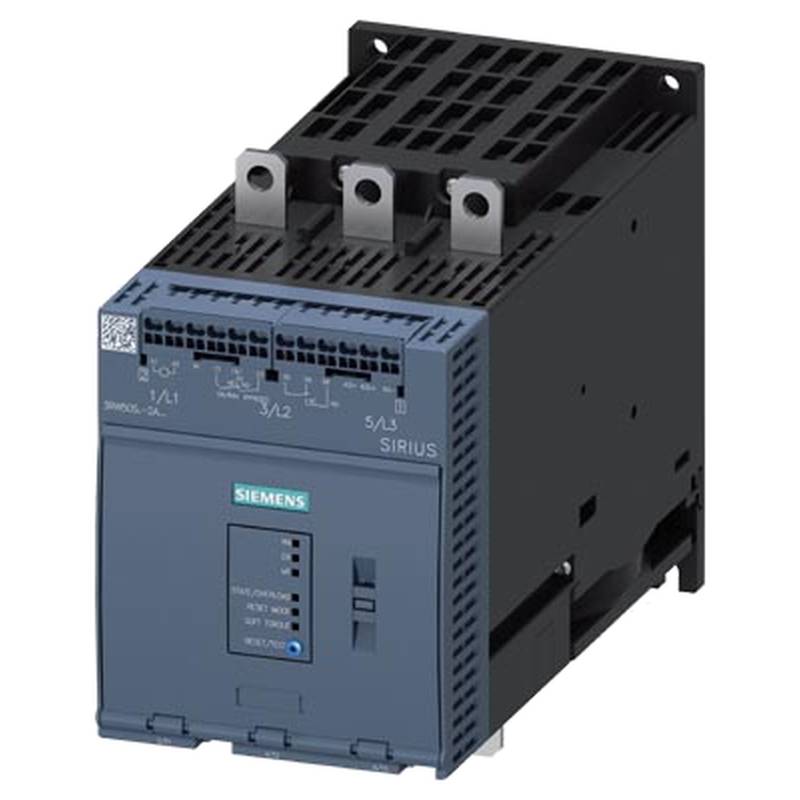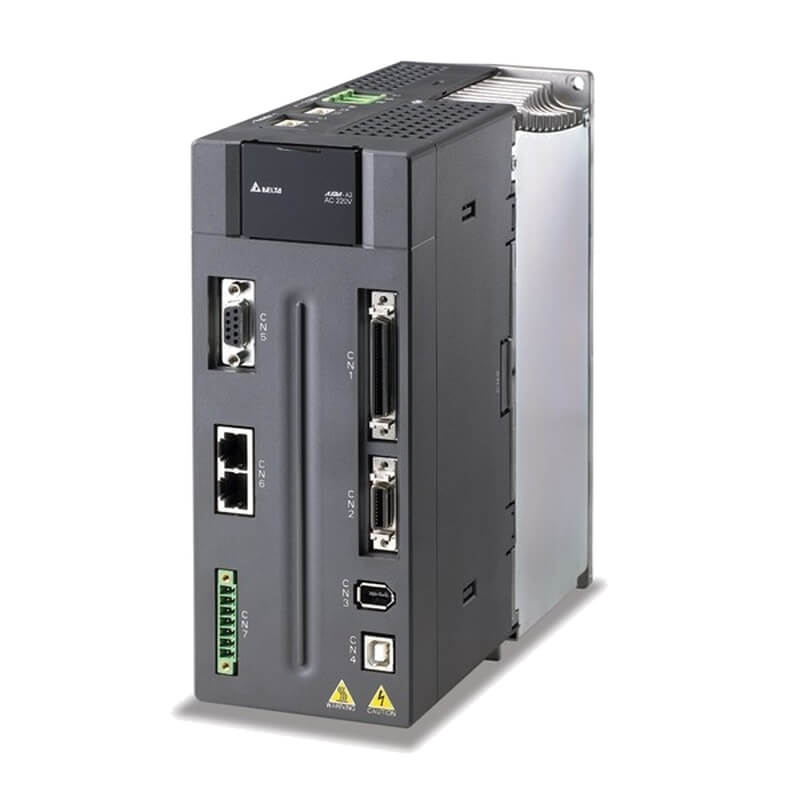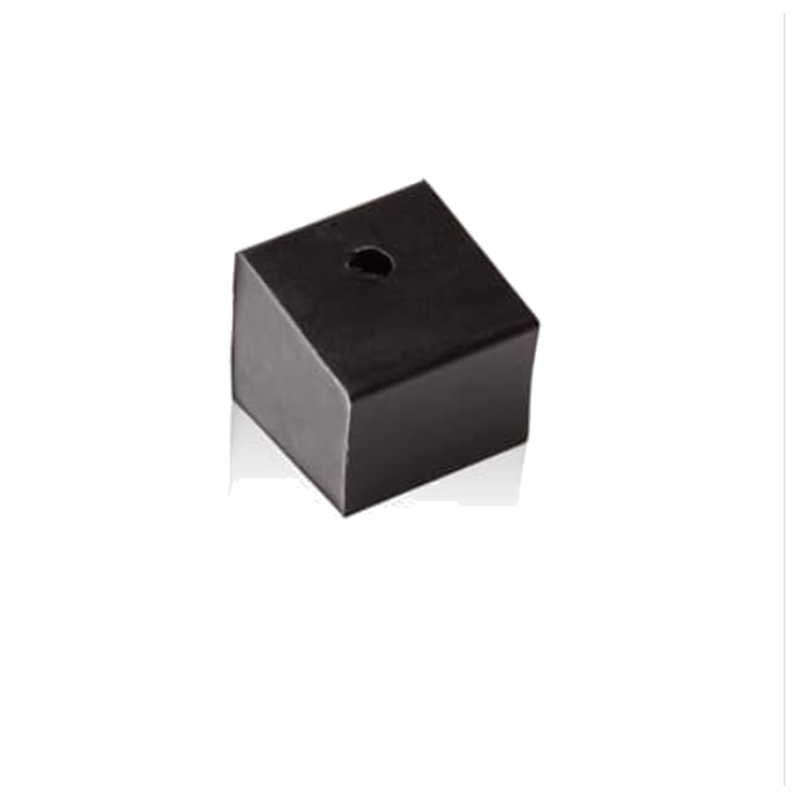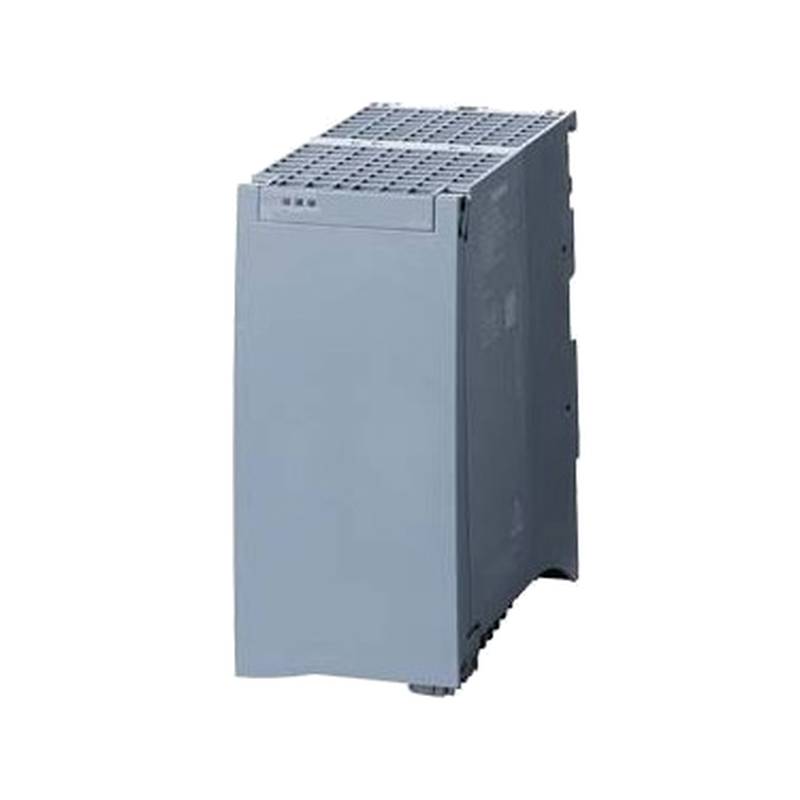
The Siemens 5SU1656-7KK20 Residual Current Circuit Breaker (RCCB) stands as a robust solution for crucial electrical safety in various industrial and commercial applications. This 20A, 300mA, 1P+N unit offers advanced protection against earth faults and residual currents, safeguarding both personnel and equipment from potentially hazardous electrical situations. Its inherent design prioritizes reliability and ease of integration, making it a preferred choice for professionals seeking dependable circuit protection.
Product Specifications
| Feature | Specification |
| :----------------------- | :------------------------------------------- |
| Product Type | Residual Current Circuit Breaker (RCCB) |
| Siemens Product Number | 5SU1656-7KK20 |
| Rated Current (In) | 20A |
| Residual Current (IΔn) | 300mA |
| Number of Poles | 1P+N (1 Pole + Neutral) |
| Breaking Capacity (Icn) | 6kA |
| Tripping Characteristic | Type AC |
| Voltage Rating (Ue) | 230/400V |
| Frequency | 50/60 Hz |
| Mounting Type | DIN Rail |
| Protection Class | IP20 (Enclosure), IP40 (Installed) |
| Operating Temperature | -25°C to +45°C |
| Compliance Standards | IEC/EN 61009-1, IEC/EN 61009-2-1 |
Core Features & Market Positioning
The Siemens 5SU1656-7KK20 distinguishes itself through its high-quality construction and adherence to stringent international safety standards, including IEC/EN 61009-1 and IEC/EN 61009-2-1. This RCCB offers a breaking capacity of 6kA, ensuring effective interruption of fault currents. Its Type AC tripping characteristic is designed for detecting sinusoidal AC residual currents, a common requirement in many electrical installations. The compact 1P+N configuration simplifies wiring and installation, particularly in space-constrained panels, positioning it as a versatile and efficient safety component in the competitive market for circuit protection devices.
Key Application Scenarios
This Siemens RCCB is ideally suited for safeguarding circuits in residential, commercial, and industrial environments where protection against electric shock due to indirect contact is paramount. Common applications include protection of lighting circuits, socket outlets, and specific appliances. Its 300mA sensitivity makes it suitable for general safety applications, preventing fire hazards caused by residual currents. The 20A rating is appropriate for circuits with moderate loads, ensuring reliable operation and preventing nuisance tripping under normal conditions.
Practical System Integration Guidance
Integrating the Siemens 5SU1656-7KK20 is straightforward due to its standard DIN rail mounting. Ensure that the incoming power supply is correctly connected to the line terminals and the outgoing load is connected to the load terminals, respecting the 1P+N configuration. Proper grounding of the system is essential for the effective operation of the RCCB. Before energizing, verify all connections are secure and that the breaker is in the OFF position. The device is designed for direct connection within standard distribution boards and control panels.
Operation and Risk Mitigation
The primary function of the 5SU1656-7KK20 is to detect earth leakage currents and rapidly disconnect the circuit, thereby preventing electric shock and mitigating fire risks. In the event of a fault, the RCCB will trip, requiring a manual reset. If the breaker trips repeatedly, it indicates a persistent fault condition that needs immediate investigation. Common troubleshooting involves checking the connected loads for insulation issues or grounding faults. Always ensure the circuit is de-energized before attempting any inspection or reset procedure.
Scalability & Long-Term Value
Siemens' commitment to standardization ensures that the 5SU1656-7KK20 integrates seamlessly with other Siemens circuit protection devices and components within their established electrical installation systems. This compatibility facilitates upgrades and expansions of existing electrical infrastructure. While this specific model is focused on direct protection, its robust design and reliable performance contribute to the long-term value of any electrical installation by minimizing downtime and preventing costly damage caused by electrical faults.
Frequently Asked Questions
What is the primary function of the Siemens 5SU1656-7KK20 RCCB?
This device provides essential protection against electric shock by detecting residual currents. It interrupts the circuit rapidly when a fault is detected, preventing harm to individuals.
It also serves to prevent potential fire hazards that can arise from persistent earth leakage currents. The 300mA sensitivity is a key parameter for this safety function.
The RCCB is designed for operational continuity, ensuring that circuits are only interrupted when a genuine safety concern is identified.
How does the 300mA sensitivity impact its application?
A 300mA residual current setting is generally used for protection against fire hazards. It's less sensitive than devices used for direct protection against electric shock (typically 30mA).
This sensitivity level is suitable for main distribution boards and circuits where preventing fires is a primary concern, in addition to general safety.
It balances protection against electrical hazards with minimizing nuisance tripping in installations with higher capacitive loads or longer cable runs.
Can the Siemens 5SU1656-7KK20 be used for motor protection?
No, this RCCB is not designed for direct motor overload protection. Motor protection typically requires thermal overload relays or dedicated motor protection circuit breakers.
While it offers residual current protection, it does not provide overcurrent protection against phase-to-phase faults or prolonged overloads that motors often experience.
For motor circuits, it should be used in conjunction with an appropriate motor starter that includes motor overload protection.
What does "1P+N" signify for this circuit breaker?
"1P+N" indicates that the circuit breaker protects a single phase conductor and the neutral conductor simultaneously. This is crucial for systems where both conductors carry current.
It ensures that both the live and neutral wires are disconnected together during a fault, which is a requirement for certain electrical safety standards.
This configuration is common in single-phase AC power distribution systems, offering complete isolation of the circuit when tripped.
What is the difference between an RCCB and a Miniature Circuit Breaker (MCB)?
An MCB primarily protects against overcurrents (overloads and short circuits). An RCCB specifically detects and protects against residual (earth leakage) currents.
While both are protective devices, their tripping mechanisms and the types of faults they address are distinct. Many installations combine both for comprehensive protection.
This Siemens 5SU1656-7KK20 is an RCCB, so it focuses on earth fault detection, not general overcurrents.
How is the Siemens 5SU1656-7KK20 installed in a distribution board?
It is designed for snap-on mounting onto a standard 35mm DIN rail within an electrical distribution board or control panel. Correct polarity and terminal connections are vital.
Incoming power from the supply side connects to the top terminals (line and neutral), and outgoing load connections are made to the bottom terminals. Ensure the circuit is de-energized before installation.
It is essential to follow the wiring diagrams provided by Siemens and local electrical codes to ensure a safe and compliant installation.
What are the typical causes of an RCCB tripping frequently?
Frequent tripping usually indicates a persistent earth leakage fault within the protected circuit or connected appliances. This could be due to damaged insulation or faulty wiring.
It might also occur with high capacitive loads or long cable runs, especially with older-style RCCBs, though this unit is designed to manage typical installations.
An electrician should thoroughly inspect the circuit and all connected equipment to identify and rectify the root cause of the tripping.
What is the breaking capacity (Icn) of 6kA, and why is it important?
The 6kA breaking capacity signifies the maximum fault current the RCCB can safely interrupt without being damaged. This is a critical safety parameter.
A higher breaking capacity ensures the device can handle fault conditions that may arise in the electrical system, preventing catastrophic failure of the breaker itself.
It's important to select an RCCB with a breaking capacity that meets or exceeds the prospective short-circuit current at the point of installation.
Does this RCCB offer protection against overloads?
No, the Siemens 5SU1656-7KK20 is a residual current circuit breaker and does not provide overcurrent protection against overloads or short circuits.
For complete protection, it must be used in conjunction with an appropriately rated Miniature Circuit Breaker (MCB) upstream or as part of a combined device.
The RCCB's primary role is earth leakage detection, which is distinct from the overcurrent protection offered by MCBs.
What standards does the 5SU1656-7KK20 comply with?
This RCCB complies with international safety standards IEC/EN 61009-1 and IEC/EN 61009-2-1. These standards ensure product safety and performance.
Compliance with these IEC/EN standards indicates that the device has undergone rigorous testing for electrical safety, functionality, and durability.
Adherence to these recognized international standards ensures reliability and interoperability within electrical systems across different regions.

























